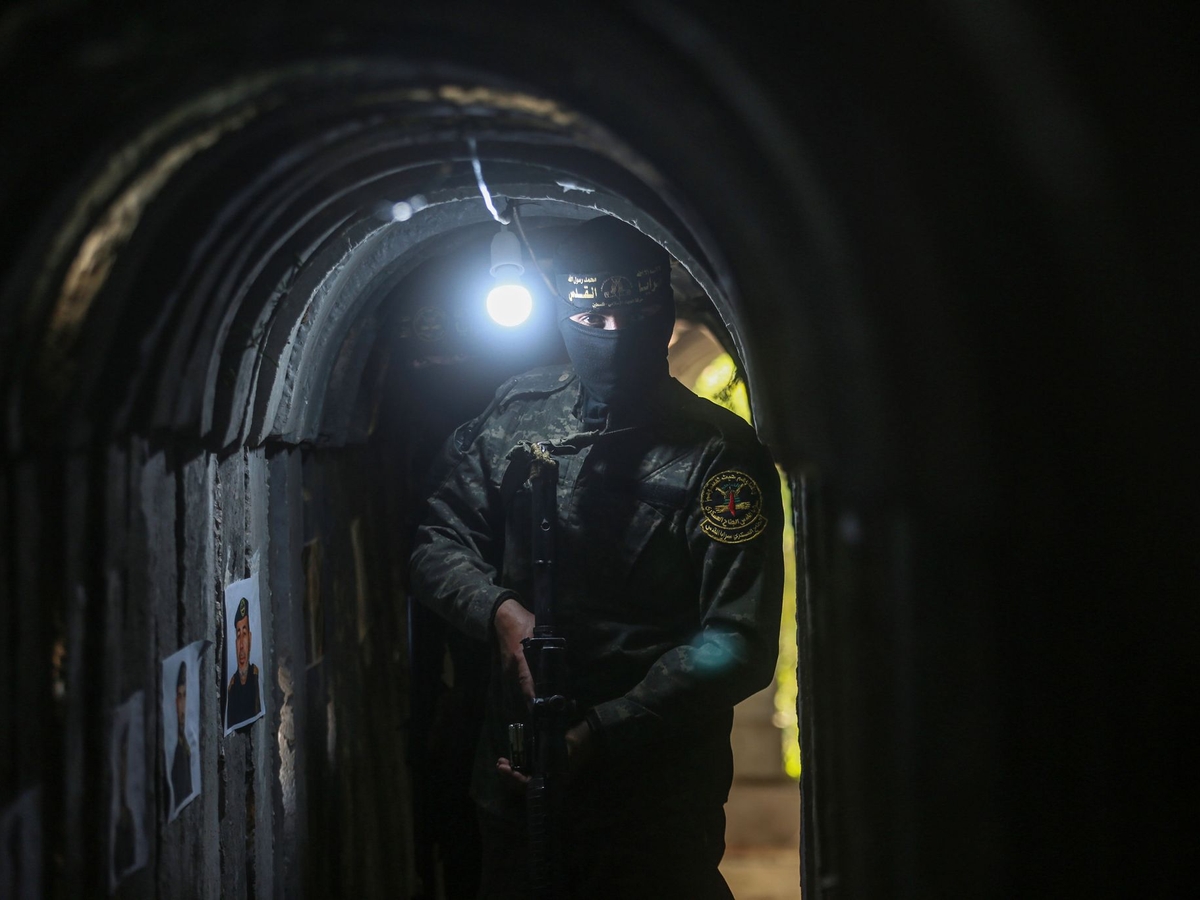"A spider's web": the tunnel system in the Gaza Strip
Deep craters can be seen in images from Jabalia in the Gaza Strip. When the Israeli air force destroyed parts of the refugee quarter in the hunt for Palestinian terrorists, collapsed Hamas tunnels tore holes in the earth's surface, according to the Israeli army.
There is a second world in the sandy soil of the Gaza Strip, which is around 45 kilometers long and around six to 14 kilometers wide and has a population of more than two million. An Israeli army spokesman once described it as "underground, the metro or the subway".
Dimensions cannot be quantified
A figure of hundreds of tunnels over a total length of 500 kilometers is often quoted. However, Daphne Richemond-Barak, an expert on underground warfare at Reichman University in Tel Aviv, recently doubted in the New York Times that anyone knows how long the route actually is.
"I think Hamas is exaggerating a bit with the 500 kilometers because they want to prevent Israel from invading," military expert Harel Chorev from Tel Aviv University also told US broadcaster CNN. "We are talking about dozens of kilometers underground with command, control and communication rooms, storage chambers and launching pads for the missiles."
Some of the tunnels are concreted or supplied with electricity. On average, they are two meters high and one meter wide, but some are also large enough for vehicles. In order to withstand Israeli bombs from the air, some reach dozens of meters underground. Their entrances should be located in residential buildings or mosques, for example.
According to Israeli intelligence services, Hamas operates its command and control center under the Shifa Hospital, the largest clinic in the Gaza Strip, for example. Hamas denies this. And in November 2022, the UN Palestinian Relief and Works Agency (UNRWA) strongly condemned the fact that there is a tunnel under one of its schools.
What the underground network is for
Israel unilaterally withdrew from the Gaza Strip in 2005, leaving behind a power vacuum. After a bloody battle, Hamas took control of the coastal area in 2007. In response, Israel imposed a blockade, which was supported by Egypt. The blockade was intended to make it more difficult to import weapons and weapons-making materials into the Gaza Strip. Since then, Hamas has continued to expand the ramified underground network. Weapons are said to have been brought into the Gaza Strip through the tunnels. It is said that people can also cross the border irregularly, for example high-ranking Hamas officials, foreign military advisors or couriers with suitcases of money. However, food, consumer goods, cars and fuel also enter the Gaza Strip through the tunnels. According to residents, Hamas levies customs duties on these goods and finances itself in this way. The tunnel system also offers Hamas terrorists protection from air strikes and persecution.
Experts assume that the 242 hostages taken from Israel by Hamas terrorists and other terrorist groups on October 7 are also being held captive there. An 85-year-old woman released from the Gaza Strip on October 23 describes the system through which she had to move during the hostage-taking as "a spider's web".
The underground is also a strategic tool in a possible house-to-house battle. Hamas fighters could attack from behind as if from nowhere. The tunnels themselves are likely to be booby-trapped.
The ongoing conflicts in the Middle East have led to the expansion of Hamas's tunnel system in the Gaza Strip, serving as a strategic tool for smuggling weapons and high-ranking officials, as well as a means to evade air strikes and Israeli blockades. According to Israeli intelligence, Hamas's command and control center is allegedly located beneath the Shifa Hospital in the Gaza Strip, a claim Hamas denies.
Despite Israel's destruction of Hamas tunnels in Jabalia, which caused deep craters and collapsed parts of the refugee quarter, the organization continues to rebuild and expand its underground network, making accurate quantification of the tunnel system's dimensions challenging.
Source: www.dpa.com








